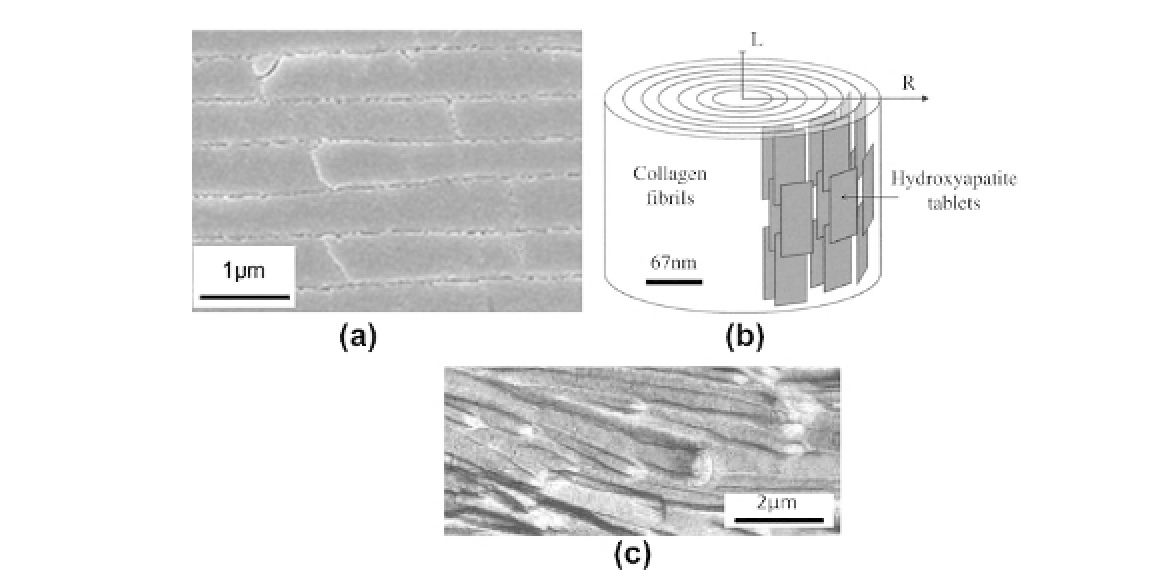Biomedical Engineering Reference
In-Depth Information
FIGURE 3.3
Staggered arrangement of mineral tablets. (a) scanning electron micrograph of nacre, (b) schematic of min-
eralized collagen fibrils in bone (adapted from Ref.
25
), and (c) scanning electron micrograph of tooth dentin. Adapted from
Ref.
26
.
known as a
staggered arrangement
[14, 23]
; see
Figure 3.3
. This staggered arrangement of min-
eral tablets is also found in other biological
materials such as teeth, collagen fiber, spider
silk, and cellulose fiber and is now considered a
universal pattern
[20]
, providing attractive com-
binations of stiffness, strength, and toughness
[23, 24]
. Several analytical and numerical mod-
els have therefore been proposed to predict the
behavior of staggered structures
[25, 26]
. These
models for stiffness, strength, and toughness are
briefly reviewed next.
These tablets are bonded between organic lay-
ers of thickness
t
i
.
Assuming an elastic, perfectly plastic behav-
ior for the interface and a constant shear field
along the interface, Kotha
et al
.
[27]
derived the
following expression for the tensile modulus
E
of staggered composites:
1
E
=
T
I
T
E
M
+
2
T
1
T
I
γ
G
I
1
+
COSH (γ
L
)
SINH (γ
L
)
1
+
,
L
(3.1)
where
3.2.1 Stiffness
The tensile behavior of staggered structures
has been investigated by a simple shear-tension
chain model. The model is based on a small
representative volume element (RVE) of the
structure shown in
Figure 3.4
[25]
. The tablets
have length
L
, thickness
t,
and overlap
L
/2.
G
I
E
M
1
T
I
T
,
(3.2)
γ =
E
m
is the Young's modulus of the mineral, and
G
i
is the shear modulus of the interface.
A reasonable assumption for biological hard
materials is that the organic interfaces are much







